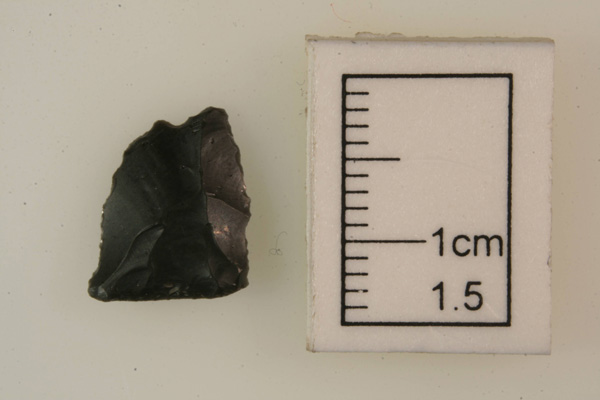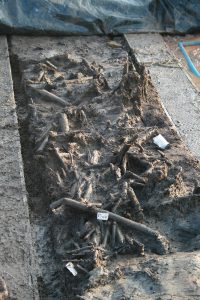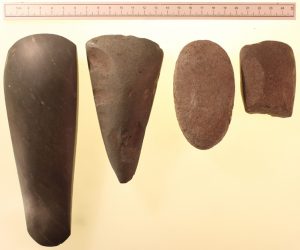The study of the lithic (man modified stone) assemblage has highlighted the wide range of sources of raw material which were knapped and used at the site, indicating that the occupants had contacts over a large area of northern Britain. To the north, connections with Scotland are strongly indicated by the presence of tools made from chert found in the Southern Uplands of Scotland (Radiolarian chert), and, perhaps more significantly, by a small assemblage of pitchstone, a volcanic rock which is found almost exclusively on the Isle of Arran in Scotland.

The flint tools indicate an overwhelming reliance on nodules retrieved from beach deposits that extend down the west coast of Cumbria. Material from such secondary sources are often of poor quality, as is the chert retrieved from Pennine locations and from local riverine and till deposits.

The distinctive brown and grey ’till flint’ though, is of a superior quality and and most likely derived from sources in the north-eastern regions of England.

Other Volcanic rocks were also used, notably tuff from the Langdale area of the Lake District.


